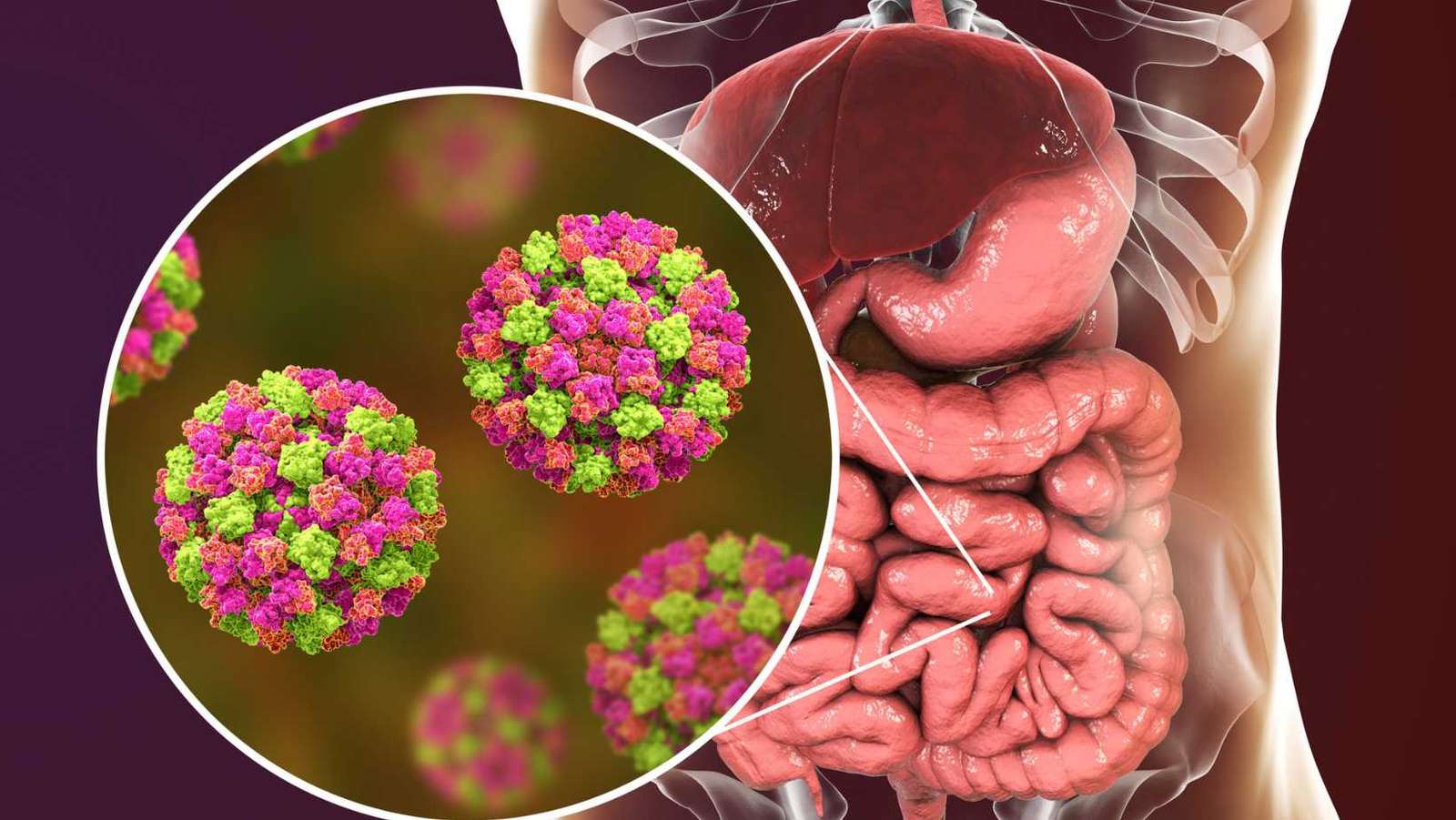|
Getting your Trinity Audio player ready...
|
If you’ve traveled to the tropics or live there, knowing about tropical sprue is crucial. It causes chronic diarrhea and weight loss because your body can’t absorb nutrients correctly. Symptoms include constant, watery diarrhea, malnutrition, anemia, and a lack of vitamins. Getting a quick diagnosis and treatment is important to prevent complications. This condition may be caused by an infection and environmental issues that affect how well your body absorbs nutrients.
Table of Contents
ToggleIt’s essential to know the causes of tropical sprue and spot the main symptoms. For both travelers and those who live in tropical areas, understanding this disease can help take control of your health. Proper treatment for tropical sprue lets you handle the symptoms and balance your nutrition again.
What is Tropical Sprue?
Definition and Overview
Tropical sprue is a condition that causes ongoing diarrhea and prevents the body from absorbing nutrients well. It affects people living in warm, humid areas without a clear reason being found. This issue with nutrient intake leads to a variety of problems in the gut and overall health.
Historical Background
In 1759, William Hillary first noted tropical sprue in people who had been living in Barbados. They faced long-term diarrhea. Later, in 1880, Patrick Manson used the term “sprue” to explain this issue, focusing on cases from Asia. Since then, doctors and scientists have worked to understand the condition and what lies underneath it.

Causes of Tropical Sprue
The exact cause of tropical sprue is still a mystery. However, researchers have found several things that might lead to this condition. These include toxins, lack of nutrients, and certain infections. Each of these can affect the body in ways that lead to tropical sprue.
Toxins as a Potential Cause
One possible cause is exposure to harmful toxins. These toxins can be in food or water. They hurt the lining of the small intestine. This makes it hard for the body to absorb nutrients, causing symptoms of tropical sprue.
Nutritional Deficiencies
A diet missing important vitamins and minerals can make the gut more fragile. This can lead to tropical sprue. Getting the right nutrients is key in treating and preventing this disease.
Infectious Agents
Infections caused by bacteria and viruses could also play a role. They damage the small bowel. This can cause problems like bacterial overgrowth. This makes it hard for the body to use nutrients well. While researchers have found some infectious causes, more study is needed to fully understand their impact on tropical sprue.

Epidemiology of Tropical Sprue
Tropical sprue happens mostly in areas between 30°N to 30°S. It is found in the West, including Puerto Rico, Haiti, and Cuba. The East has it too, like in India and Pakistan. It’s rare in the U.S. The number of cases in places like India and Pakistan has gone down. This is thanks to better hygiene and more antibiotics.
Geographic Distribution
Tropical sprue is found in tropical places around the world. Indigenous people and long-term visitors of these areas are at a higher risk. Yet, if visitors stay for less than 2 weeks, they are less likely to get sick.
Prevalence and Risk Factors
Both men and women get tropical sprue equally. Some places like India and Pakistan have seen fewer cases. This is because of better hygiene and more use of antibiotics. But, it’s still a big issue in these tropical parts, especially for locals and those who stay a long time.

tropical sprue symptoms
Gastrointestinal Symptoms
People with tropical sprue start feeling ill with traveler’s diarrhea. This diarrhea keeps going and smells bad. They may also have a swollen belly, painful cramps, and loud stomach gurgles.
Malabsorption and Nutritional Deficiencies
Tropical sprue blocks the body from absorbing needed nutrients. This leads to fatty stools, anemia, and losing weight. Not getting enough vitamins can make the tongue, lips, and mouth sore.
Physical Findings
Doctors might see signs of poor nutrition when they check someone with tropical sprue. This could be swollen feet or a big tummy. They may also spot a red tongue, sore lips, and aching mouth.

Pathophysiology and Histopathology
The story behind tropical sprue is an intricate one. It involves damage to the gut lining, the shrinkage of tiny hair-like structures called villi, and the immune system getting involved. At first, the lining of the small intestine might look okay, but things get worse. The villi become shorter and eventually disappear, causing trouble absorbing nutrients.
Mucosal Damage and Villous Atrophy
In tropical sprue, the inside of the small intestine gets worse as time goes by. At the start, the cells are bigger, and there’s an early growth of the finger-like villi. But soon, the villi start to shrink, leading to a complete breakdown. This breakdown is at the heart of why patients can’t absorb nutrients properly.
Immune System Involvement
The immune system seems to have a big part in causing tropical sprue. It’s because certain immune cells increase in number and gather in the intestine’s lining. Also, there’s a finding that fats build up under the intestinal lining. This buildup adds to the intestine’s trouble working well and absorbing nutrients.

Diagnostic Evaluation
Diagnosing tropical sprue means checking for other causes of chronic diarrhea and malabsorption. Doctors run lab tests, do imaging studies, and use endoscopes to look for clues. They use these to confirm if it’s tropical sprue.
Laboratory Tests
Lab tests might show certain things, like megaloblastic anemia. They can also find low vitamin B12 and folate, and high homocysteine and methylmalonic acid. Stool tests are done to make sure it’s not an infection.
Imaging Studies
Barium studies, like small bowel follow-throughs, might show signs of tropical sprue. They could show the intestines are thicker in some areas. These tests also tell how much the disease has spread.
Endoscopic and Biopsy Findings
An endoscopy can look closely at the duodenum and jejunum. It might find that the duodenum’s folds are gone or scalloped. There might also be mucosal fissures. A biopsy can show villous atrophy, which is a sign of tropical sprue.

To diagnose tropical sprue, doctors use several tools. They combine lab tests, images, and endoscopies. This helps make sure it’s tropical sprue and not something else.
Treatment and Management
Tropical sprue treatment is complex, focusing on finding the root causes and fixing nutritional issues. It uses antibiotics, extra vitamins, and supportive care to help patients.
Antibiotic Therapy
Antibiotics are key in treating tropical sprue. Doctors often prescribe tetracycline and folic acid by mouth for 3 to 6 months. This helps fight off infections that could be causing the syndrome. By getting rid of these infections, the gut can work better and absorb nutrients properly.
Nutritional Supplementation
Tropical sprue leads to problems absorbing nutrients, especially vitamins B12 and folate. So, patients need extra vitamins through shots or IV. This helps fix their nutritional imbalances.
Supportive Care
Along with medicine, giving supportive care is essential. It helps with fluid and electrolyte imbalances, often important for very dehydrated patients. This may involve fluid IVs and electrolyte drinks. In worse cases, staying in the hospital for closer care might be necessary.
By using this full view, medical teams can tackle tropical sprue, helping patients absorb nutrients, fixing their deficiencies, and boosting their health overall.
Complications and Prognosis
Complications of tropical sprue are serious, like severe dehydration and anemia. If untreated or not fully treated, there is a chance of it coming back. This can lead to ongoing problems with not absorbing nutrients well. The prognosis of tropical sprue is good when treated quickly. But waiting too long to diagnose and treat it can cause major issues.
Those with severe dehydration, electrolyte imbalances, and anemia might need to be in the hospital. Managing these symptoms early is key to avoiding further health problems.
The outlook for tropical sprue is hopeful with the right treatment. This involves antibiotics, vitamins, minerals, and support. Yet, patients often lack important vitamins and minerals. Children might find it hard to grow and their bones could also develop slowly because of this.
It’s hard to prevent tropical sprue completely, except by not living in or visiting tropical areas. But, new findings and treatments are being discovered. These could help improve how we care for those with tropical sprue and their future health outcomes.
Differential Diagnosis
When looking at a patient who might have tropical sprue, it’s key to think about the various possibilities. There are several illnesses that might show the same signs, like constant diarrhea and the body not absorbing food right. This includes celiac disease, Crohn’s disease, and other issues that stop the body from absorbing nutrients.
Celiac Disease
Celiac disease is caused by the body’s bad reaction to gluten. It might look like tropical sprue because both can cause gut problems and issues with food not being taken in by the body properly. To tell the two apart, looking at the patient’s diet history, specific blood tests, and examining tissue from the gut are needed.
Crohn’s Disease
Crohn’s disease is also a kind of gut problem that affects how the body absorbs food. It can seem like tropical sprue with its long-lasting diarrhea, losing weight, and difficulty in absorbing nutrients. Figuring out if it’s Crohn’s or tropical sprue might involve looking inside the gut with a camera, doing imaging tests, and checking the affected gut tissue under a microscope.
Other Malabsorption Syndromes
There are more illnesses that can look like tropical sprue, such as having too much bad bacteria in the gut, not having enough enzymes made by the pancreas, or lacking certain nutrients. To find out the real issue, it’s important to do lots of tests. These can include blood work, scans, and tests to see how well the gut is working.
Taking careful notes on a patient’s health, along with doing a lot of tests, is needed to figure out what’s going on. This helps the doctor to choose the right treatment and care plan for the patient.
Prevention and Risk Reduction
Preventing tropical sprue in its endemic areas is key. To lower the risk, focus on better hygiene, clean water, and sanitation. Quick treatment for conditions like acute diarrhea or traveler’s diarrhea can stop them from becoming chronic.
Teaching people, especially healthcare workers, about tropical sprue is important. Knowing the signs and the ways to prevent it can help everyone. This knowledge means they can act early and get the medical help they need when showing symptoms.
Emerging Therapies and Research
Scientists are looking into new treatments and understanding tropical sprue’s root cause. They are researching the impact of certain germs and new drugs.
They’re also checking if tailored diets can help the gut work better and take in nutrients. This could mean improved treatments and outcomes for patients.
The study is also focusing on how infections like bacteria and viruses affect tropical sprue. Scientists aim to create better, more precise drugs that target the infection part of this disease. This could also include new ways to use antibiotics for treating people with tropical sprue.
In addition, researchers are looking at whether special diets can help the gut and increase nutrient intake for those with tropical sprue. This method tries to fix the problem of not absorbing enough nutrients. It’s a step towards making people with tropical sprue healthier and less prone to complications.
As the research on tropical sprue progresses, new treatments are on the horizon. This will not only improve how the disorder is managed but also offer hope of better outcomes for those living with tropical sprue, especially in areas where it’s common or for people visiting tropical regions.
Patient Education and Support
Helping patients with tropical sprue understand their condition is very important. They need to know what it is, its symptoms, and how to follow the treatment plan. This way, they can work together with their healthcare team to feel better.
Teaching about special diets, taking extra nutrients, and care for any extra health problems is key. It gives patients with tropical sprue the tools they need. Also, being part of groups or seeing doctors who know a lot about tropical sprue helps a lot.
It’s crucial for patients and their doctors to work as a team. Putting a lot of focus on educating and supporting the patients is beneficial. This approach improves the patients’ lives and how well they do in the long run.
Conclusion
Tropical sprue is a complex illness that needs quick diagnosis and a full treatment plan. This stops long-term problems and makes sure patients get better. It’s important for doctors to understand how tropical sprue comes about, its symptoms, and how to find it early, especially in places where it’s common or among people who’ve traveled to such areas. New research and treatments are offering hope for those with tropical sprue.
Learning more about this condition is key for healthcare experts. They need to know about the latest in diagnosis and treatment. By spotting the main signs, using proper tests, and starting a treatment plan quickly, they can help people with tropical sprue a lot. This could lead to better outcomes and happier lives for those facing this illness.
Tropical sprue is still a big concern in many parts of the globe, especially warm regions. Early spotting and care, along with continuous research, are crucial. This effort can lessen the impact of tropical sprue and make life better for those with this hard-to-deal-with condition.
FAQ
What is tropical sprue?
Tropical sprue is a sickness that affects how your body absorbs nutrients. It causes ongoing diarrhea, a drop in weight, and troubles with getting nutrients. This issue shows up in people who have been to or live in hot, wet places.
What are the symptoms of tropical sprue?
Signs of this sickness are long-lasting diarrhea, not getting enough nutrients, losing weight, and feeling tired. It’s key to find and treat it early to stay healthy.
What causes tropical sprue?
The exact reason is not fully understood. But many think it starts after a bad stomach bug messes with the gut. This causes problems with absorbing food, which can then lead to more issues. Things like poisons, not getting enough nutrients, and germs might be behind it.
Where is tropical sprue found?
You’re more likely to see tropical sprue in hot, humid places around the world. Specifically, the area from 30 degrees north to 30 degrees south of the equator. This includes spots like Puerto Rico, Haiti, Cuba, India, and Pakistan.
How is tropical sprue diagnosed?
Getting a diagnosis means ruling out other reasons for ongoing diarrhea and nutrient issues. Doctors might use different tests like blood tests, looking closely inside you, and taking tiny samples of tissue to check.
How is tropical sprue treated?
Treating it involves giving antibiotics, extra vitamins straight into the veins, and help like replacing fluids and minerals your body might have lost.
What are the potential complications of tropical sprue?
If not treated correctly, it can lead to serious dehydration, imbalances in your body, and not enough red blood cells. This could mean the problem coming back or sticking around.
How can tropical sprue be prevented?
You can lower your chances by keeping things clean, having safe water to drink, and stopping stomach bugs in their tracks with quick treatment.
Source Links
- https://www.ncbi.nlm.nih.gov/pmc/articles/PMC7151975/
- https://www.ncbi.nlm.nih.gov/books/NBK567742/
- https://www.mountsinai.org/health-library/diseases-conditions/tropical-sprue
- https://emedicine.medscape.com/article/182986-overview
- https://rarediseases.org/rare-diseases/tropical-sprue/
- https://www.healthline.com/health/tropical-sprue
- https://emedicine.medscape.com/article/182986-treatment
- https://thekingsleyclinic.com/uncategorized/tropical-sprue-understanding-symptoms-causes-and-treatment-a-comprehensive-patient-guide/
- https://link.springer.com/content/pdf/10.1007/s11894-001-0055-y.pdf

Dr. Nivedita Pandey
Dr Nivedita Pandey is a Gastroenterologist in Delhi, Trained in the U.S and provides pre transplant evaluation as well as post-liver transplant care. She is compassionate and caring and is most well known for being a patient listener and spending ample time with patients.
Related Blog Posts
High Stomach Acid Symptoms: Causes and Remedies
April 18, 2025





